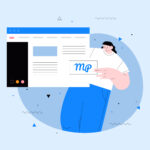After four years of being in the cloud, Microsoft Access Database Cloud is retiring support for browser-based apps which will affect loyal customers. The reason for this decision is that companies now want data to be stored locally.
By the end of April 2018, people using Access Services for SharePoint Online will need to take any action, or their apps will be shut down. They can move to an app-building platform managed by Cloud Desktop Service providers, or they can go back to the desktop or on-premises software.
While not all users will be affected by this change, those who use Access Desktop and SharePoint web apps won’t be. What they’re really limited by is web & mobile support. There is no doubt that business leaders will benefit from real-time data and collaboration between mobile devices that can be accessed from anywhere. As technology advances, companies that use it to develop will gain a competitive advantage in their respective fields. In addition, cloud-based software is fast to deploy and cost-effective to maintain.
But you can continue to use desktop and local apps that you can access over your company’s network, without using any web apps. However, most companies are moving in the opposite direction, moving from desktop and on-premises applications to cloud-based tools, the former being a thing of the past. If your web apps are important to your business, you need to move them to a secure cloud-based platform.
Web app migration is an investment of time and resources, regardless of where you migrate. You can also take this opportunity to choose the best platform for your business.
Reasons PowerApps Is Too Restricted for Most Users:
Some people who use Access may find that you won’t be able to do everything you used to with PowerApps.
- PowerApps are quite difficult for non-technical enterprise users to understand and build apps on.
- The different tools such as Outlook, Flow, SharePoint, Excel, and its database, Common Data Service — to build an app end-to-end need to be used. Other cloud platforms allow seamless building in one location.
- You need to create your own separate desktop and mobile experience from scratch. In the mobile experience, the small screen size of the desktop makes a large area of the screen unusable. On other cloud platforms, you can create your app once. Automatically optimize the user experience for desktop and mobile devices.
- Also, some tools are available at an extra cost.
- PowerApps doesn’t enable business users to configure a finely-grained permission model, which is unfortunate because it would be useful for collaboration purposes.
Migrating from Access to PowerApps is not always easier than migrating to other platforms. You need to translate data and workflows and rewrite forms, reports, and operations from scratch with another tool.
Conclusion:
It is challenging for the client and also an opportunity to move into the power of new technologies. It helps in making the app faster and easier. Mobile access and integrating it with business data are additional functionality.
Every leading enterprise offers a Cloud solution but considering the abnormalities of the migration service, Apps4Rent which also has the expertise and provides guidance in Office 365 to Office 365 Migration would be the best choice for your business.














